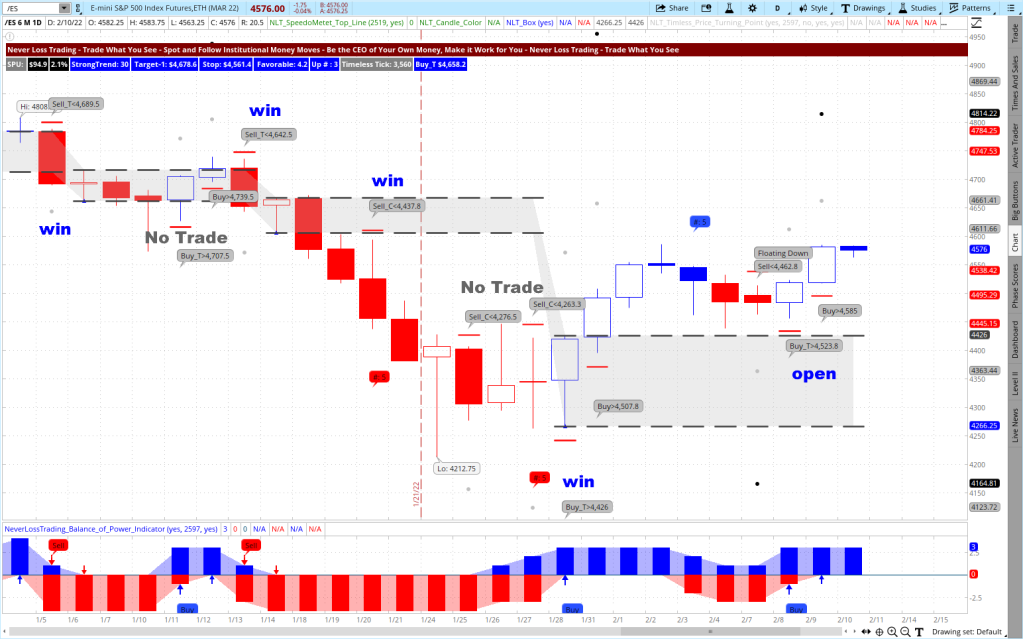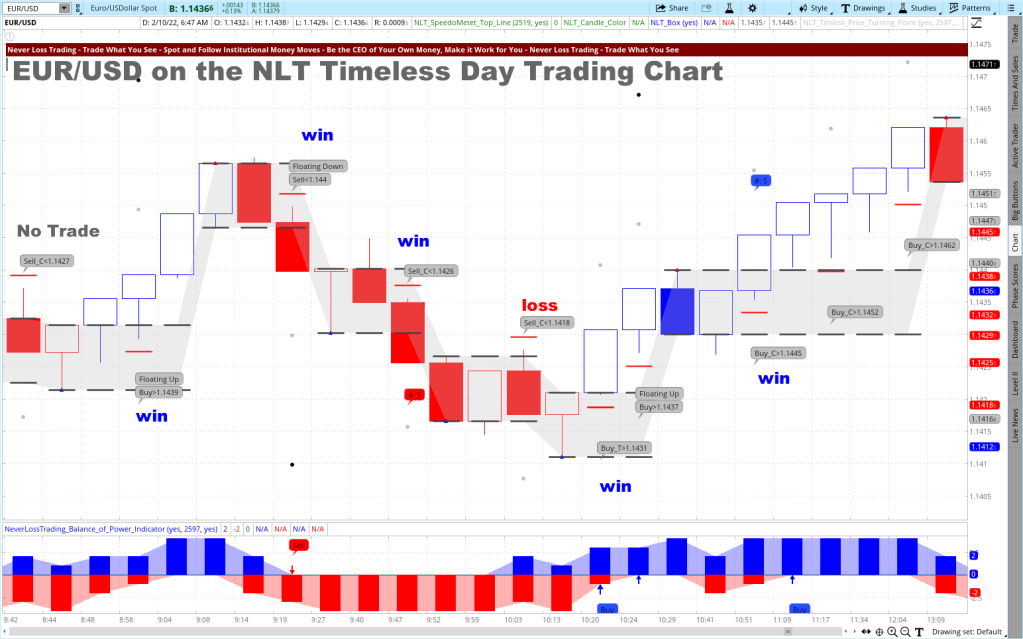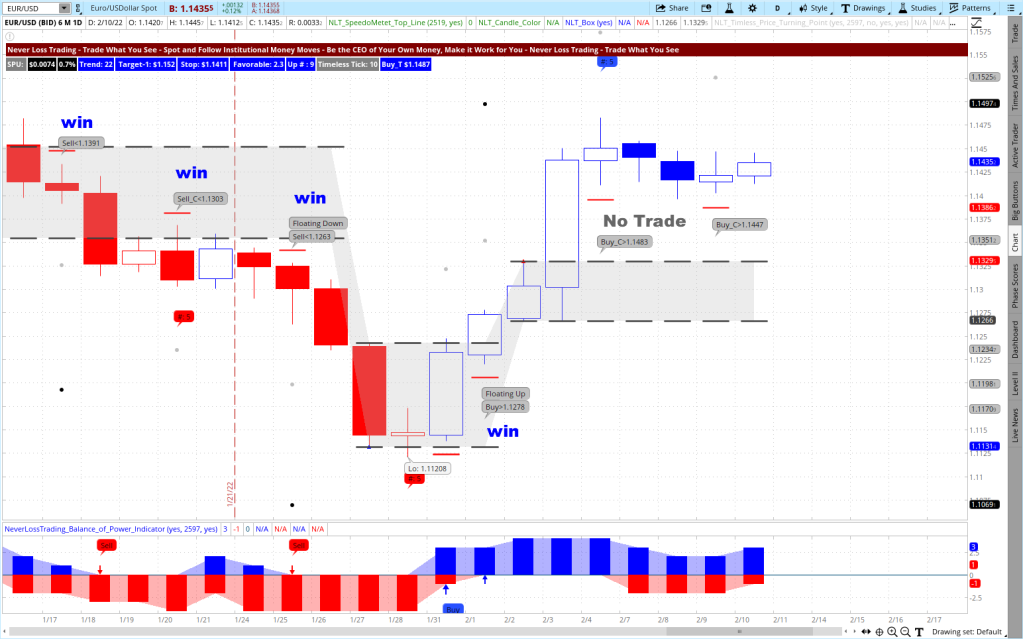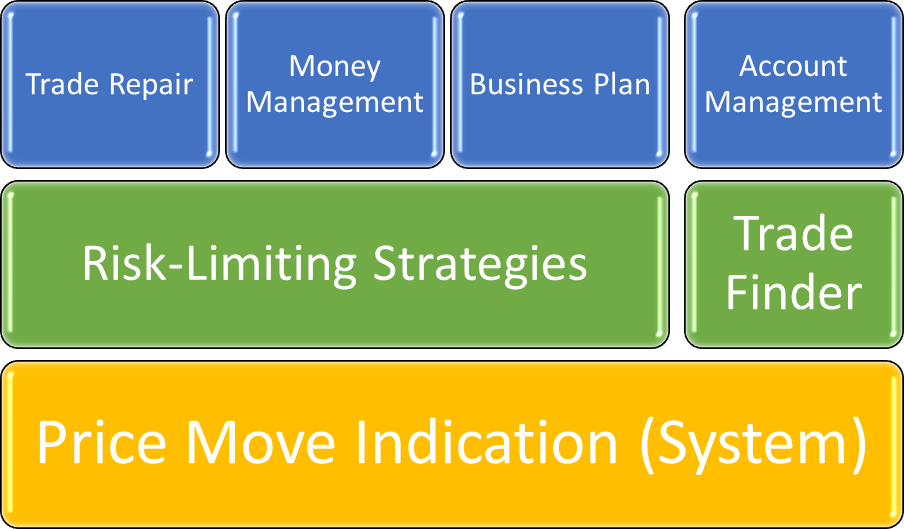By entering the trading world, you are getting into a professional business, were the ones taking the other side of your trade are prepared to win. Hence, you need to ask yourself if you are fit for the task and ready to stand your ground.
Let us invite you to understand what it takes to be a successful trader or investor who takes money long-term from the markets.

Institutional activity dominates the financial markets: stocks, commodities, currencies, and treasuries and when you can spot and follow institutional investment activities, you can build yourself an edge: By the magnitude of institutional buy or sell programs, they scale into positions to not radically change the markets. As a private investor, you can open and close entire positions on the spot, and your edge can be speed in and out of a trade, but you need to pick the right side.
Trading is not a business where the fruits hang low. It is a professional business, and you better enter with a sound understanding, else money goes quick.
Let us start with a shocking statement: 76% of retail traders lose money, and there are many reasons for this. We are happy to share our study. If you are interested in how we come up with this statement, write us an email:
contact@NeverLossTrading.com, Subj.: 76%
For this publication, we take this as a given.
Malcolm Gladwell’s book “Outliers: the story of success reports what sets high achievers apart.” Gladwell says it takes 10,000 hours of intensive practice to achieve mastery of complex skills in a subject matter. Those are a lot of hours ahead of you; however, there is hope:
A coauthor of Gladwell, Anders Ericsson, a professor of psychology at Florida State University, added another critical variable that Gladwell did not focus on: how good a student’s teacher is. Hence, practice is essential, and it is surprising how much it takes to master something complicated. But Ericsson’s research suggests that someone could practice for thousands of hours and still not be a master performer. They could be outplayed by someone who practiced less but had a teacher who showed them just what to focus on at a critical moment in their practice regimen.
In essence: you have to be good at what you do to perform, and you better find somebody helping you to obtain the right skills, mindset, and dedication to master trading or investing: Just loading an app on your smartphone and pushing the buy or sell button does not qualify you to make money from the financial markets, but with the proper teaching on hand, you can certainly shorten your fairway to trading success.
We are more than ten years in the trading education business and trade our accounts daily. From our experience, we put together a matrix with four quadrants by the dimensions of:
- Knowledge is the understanding gained through learning or experience in making trading or investing decisions and applying appropriate risk-limiting strategies.
- Time Invested, we measure the hours you spent familiarizing yourself with trading and investing in successfully performing the skill.
We see the difference between trading and investing in the time you hold an open position. Trading specifies shorter-term, like day trading or swing trading. When investing, you have open positions for multiple weeks, months, or years; however, behavior-wise, both require the same knowledge and skills. As a short-term trader, you give yourself less time for sound decisions.

Spinning a matrix of knowledge and time, we see four quadrants:
We chose the following nomenclature for the quadrants:

Losses: As a trader, you need a broker, no other qualification is required, and you can risk your money in the financial markets. Hence, there is a constant influx of traders with little experience that empty their trading accounts quickly by not knowing what they are doing.
Frustration: In this quadrant, we find long-term familiar people with the markets (I have 30 years of experience), but they learned very little of what is needed to be a successful trader, and as such, they possess little knowledge of how to risk-limit and size their investments. The worst traders have winning trades and such they celebrate their occasional success but do not make money trading long-term.
Gambling: There, we find people who have a sound knowledge of complex ways of trading or investing, but mostly they do not spend enough time learning money management, risk control, or following a business plan (action plan and financial plan). They produce winning trades but then hurt themselves by overstating their risk and giving back gains by significant losing positions. Hence, gamblers give their money long-term to the bank.
Success: Here, you find a small group of people with a sound knowledge base, familiar with trading/investing, and the financial markets allow them to be independent. They understand probability thinking and long-term take money from the markets.
After explaining the quadrants, let us put numbers to them, expressing the share of traders in each:

The shocking truth: only about 5% of the traders make money from the markets’ long-term, and if you want to be part of those, let us share some of the elements of knowledge and time investment to compare where you stand today and where you want to be. Are you following these success principles for trading and investing decisions?
Success Principles for Trading
- Decide by a system > 65% probability of winning
- Mechanical rules for entry, exit, stop
- Trade at perfect moments only
- Consider overall factors, patterns
- Risk and reward in an acceptable balance
- Capital preservation by risk-averse trading
- Holding positions to target
- Do not add to losers
- Stick with a trading strategy and system
- Follow a business plan – action plan and financial plan
- High Participation Rate (number of system opportunities you participate in)
- Trade for meaningful price moves only
- Multiple streams of income to engage 80% of your capital
- Apply risk-limiting strategies (day trading, stocks with options, options)
- Finding a mentor to learn from
We sure can fill pages of details with what all this means. If you want to learn more about our approach, check out our latest book:

Let the chart tell when to buy or sell: Here are some examples of how this can go into action as a day trader or swing trader. For longer-term investing articles, check our blog for the topic Retirement Investment, e.g.
- Stock Examples
Starting with a day trading example for AAPL. The chart applies what we call the NLT Timeless Concept: Instead of drawing the price happening over time, we trade for price changes and, with that, prevent long candles with unfavorable risk-reward setups:
AAPL NLT Timeless Trend Catching Chart, January 24, 2022

A price threshold is formulated for every trade situation: buy > and sell <. This way, you can operate with buy-stop and sell-stop orders and only enter a trade when the threshold is surpassed in the price movement of the next candle. When you add up winning and losing trades, you see an example of high probability trading where we strive for winning 65% and above.
The chart shows pure mechanical appraisals of trade situations; however, in the mentorship, you will learn the rules of how to pick higher over the lower probable cases.
Let us now take a time-based example for swing trading: holding a position between one and ten days.
AAPL NLT Daily Trend Catching Chart, Jan./Feb., 2022

The chart shows multiple situations from January 4 to February 9, 2022, where it reads no trade: A signal spelled out a trading opportunity; however, the direction was not confirmed in the price movement of the next candle as such, no transaction got accepted.
If you trade from an IRA, you would not be able to follow the short signals on the chart (SEC regulations do not allow short selling in IRAs). However, we teach appropriate Options trading strategies that you can profit from when stock prices fall.
- Futures Trading
The E-Mini S&P 500 Futures contract is an instrument many retail and professional traders operate with. Hence, let us pick a day trading situation and a longer-term trade setup:
NLT Timeless Trend Catching Chart for the E-Mini S&P 500

The chart shows multiple buy or sell opportunities:
- Each opportunity formulates as a buy > or sell < a system-defined price threshold, allowing you to enter the trade direction only when the direction is confirmed.
- Each price change ends at the target (dot on the chart) or the red cross line, indicating where to stop.
- The system probability is ≥ 65%. The difference between entry to stop is about 1.2-times the difference of entry to the target. In the chosen example, entry to target was $350, and the risk was $420. Adding up three trades: two winners ($700) and one losing trade ($420), gives you a positive expectation of $280 per contract on a set of three trades.
Daily NLT Trend Catching Chart for E-Mini S&P 500

From left to right, you see:
- A trade to the downside, breaking the price containment NLT Box and coming to target: gray dot.
- Two trades with “No Trade” indication: on the first trade, the target was cut short by a box line – no trade. The second signal was not confirmed.
- What follows are two winning trades that came to target.
- Then two “No Trades” where the threshold did not get surpassed in the next candle.
- A winning trade on Buy_T> $4,426 that came to target three candles after entry.
- An open trade that did not reach its target or stop. We set the stop by the red crossbar on the chart.
- FOREX
The most favored FOREX pair is the EUR/USD. There are multiple ways to participate in the price development, and we share a day trading and swing trading example:
Timeless NLT Day Trading Chart for EUR/USD

From left to right:
- No Trade, by NLT Box Line cutting the price move to target short
- Wining long trade to target
- Winning short trade, followed by another winning short trade
- A losing short trade
- Two winning long trades.
Daily NLT Trend Catching Chart for EUR/USD

When we sparked your interest, and you want to come on board with our systems and strategies, we invite you to a personal session to see how our systems work life.
contact@NeverLossTrading.com Subj.: Demo.
We are more than 10-years in the trading education business, teaching one-on-one at your best available days and times.
Traders with little experience often overestimate their abilities. Learning a new profession from a book would be a simple task. However, the reality is different. It takes time to build knowledge and the skillset for building the competency to make money from the financial markets.
Elements of Trading and Investing Competency

It would go too far, explaining all trading and investing competency elements, but if you are interested, we are happy to share another article about the subject matter with you:
contact@NeverLossTrading.com, Subj. Competency
As humans, one of our psychological patterns is called the Dunning-Kruger effect. It tells us that we vastly rate our competence level much higher than it actually is – and this in multiple competency fields.
In competence tests, probands that lost four out of five competence challenges still rated their competency on the subject matter above 65% and rated the winners’ competency lower.
The question: How to get around it?
With an increased competency in subject matter, the level of confidence in the own ability and skill comes to a level where perceived and actual reality are more related.
The needed competency can be built and obtained. Just do not risk your money with high confidence and little competency.
The question is: Do you possess enough knowledge and skill to put what we shared here into action. Or do you instead want to take our offer for a complimentary session with an expert where we look where you stand and develop a concept to train and coach you with the help of our systems for making competent decisions?
We teach in a holistic approach the step in learning how to turn yourself into the trader and investor you want to be:
Experience in a live session what we can do for you:
+1 866 455 4520 or contact@NeverLossTrading.com
Schedule your consulting hour and consider learning all variables needed for trading and investing success.

The frightening truth: 76% of private investors lose money!
We base this number on a study we conducted, and if you like to experience why: write us an email, and we will share the details: contact@NeverLossTrading.com Subj.: 76%.
Who had assumed such a high rate of losing traders?
If you want a different trading career, find a solid training and coaching program and contact us to find out what could work for you: contact@NeverLossTrading.com Subj: Demo.
We are ready to share our experiences, helping private investors to build their trading business. Trading is not a typical career, and you best learn from those who are long-term in this business to cope with the rollercoaster of the financial markets. We are here to help and provide feedback on what you might be doing right or wrong.
Make a change to your trading results, and we will find out which of our systems suits you best.
contact@NeverLossTrading.com Subj.: Demo.
We are happy to hear back from you,
Thomas Barmann (inventor and founder of NeverLossTrading)
Disclaimer, Terms and Conditions, Privacy | Customer Support


No comments:
Post a Comment